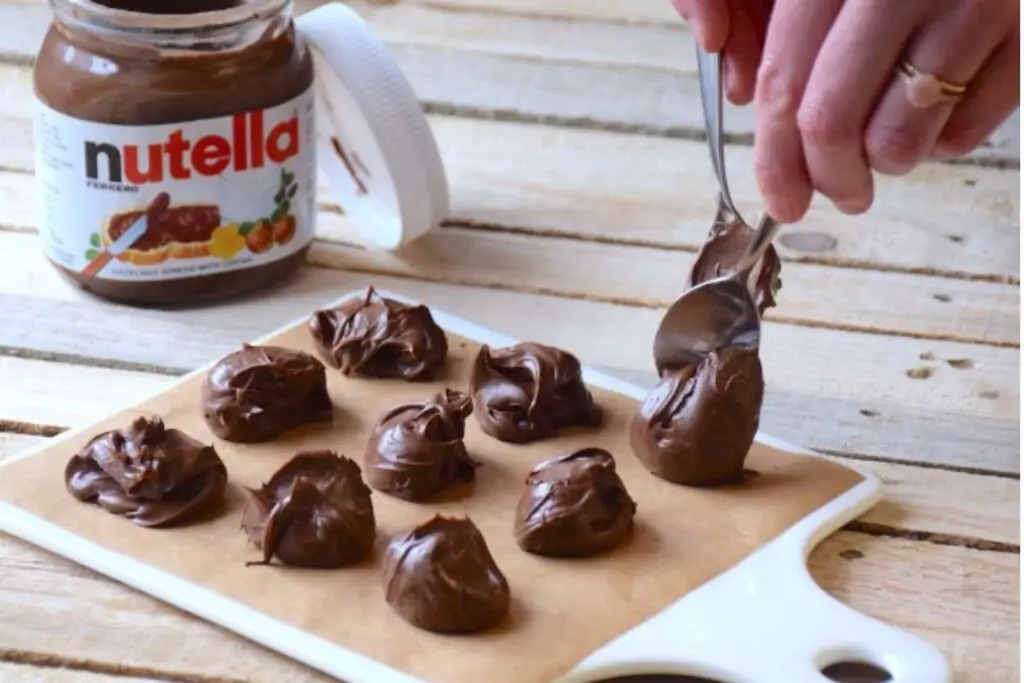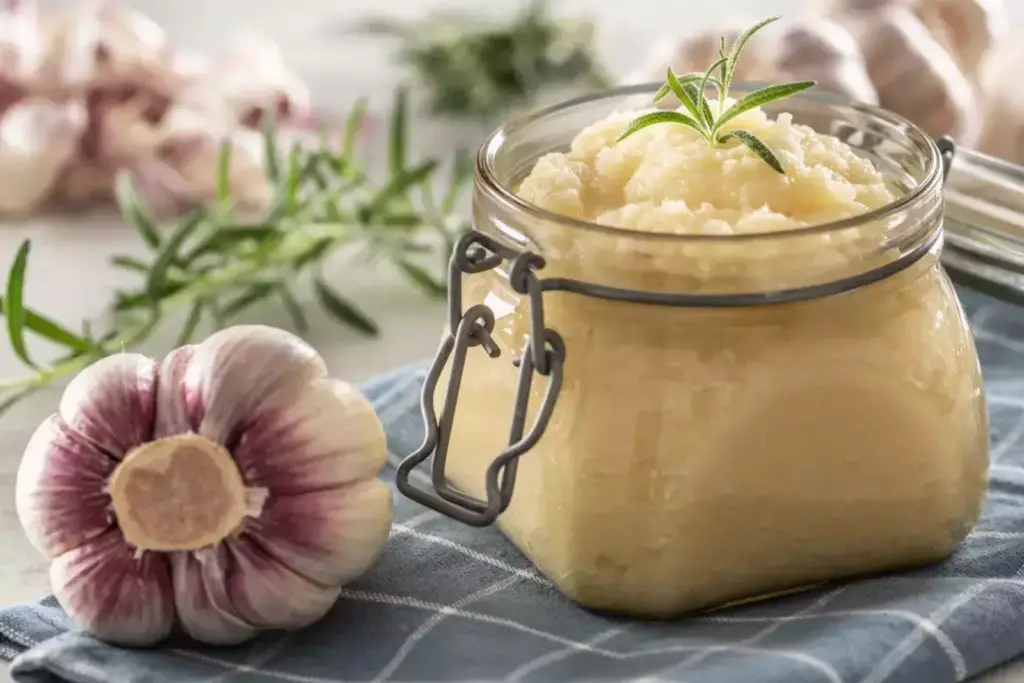
Oil is a versatile and essential ingredient in cooking, used for various purposes such as frying, sautéing, and dressing salads. While it’s commonly stored at room temperature, there may be times when you have excess oil and want to freeze it for future use. Freezing oil can help prolong its shelf life and prevent it from going rancid. By following a few simple steps, you can freeze oil effectively while maintaining its quality and flavor. This article provides a step-by-step guide on how to freeze oil to ensure its freshness and usability when you need it.
Here’s a guide on how to freeze oil:
Step 1: Choose the right type of oil
Selecting the appropriate type of oil is crucial when it comes to freezing. Certain oils fare better than others in terms of quality and stability when subjected to freezing temperatures. Oils with a high smoke point are particularly well-suited for freezing because they have a higher tolerance for heat and tend to retain their quality and flavor during the freezing and thawing process.
Oils with high smoke points, such as vegetable, canola, and peanut oil, have properties that make them suitable for freezing. The smoke point of an oil refers to the temperature at which it starts to smoke and break down, potentially leading to a bitter taste and the formation of harmful compounds. Oils with high smoke points can withstand higher temperatures without undergoing significant chemical changes, making them more resistant to degradation during the freezing process.
Vegetable oil is a commonly used oil for freezing due to its neutral flavor and high smoke point, usually ranging between 400-450°F (204-232°C). It is extracted from various plant sources and is often a blend of different oils, making it versatile and suitable for a wide range of cooking applications.
Canola oil is another excellent choice for freezing. With a smoke point of approximately 400°F (204°C), it is known for its light flavor and low saturated fat content. Canola oil is derived from the seeds of the canola plant and is often used in baking, frying, and sautéing.
Peanut oil, with a smoke point of around 450°F (232°C), is a popular choice for frying due to its high heat tolerance. It has a distinct nutty flavor that adds a unique touch to various dishes.
The high smoke points of these oils contribute to their stability and resistance to degradation when exposed to freezing temperatures. They are less likely to develop off-flavors or undergo significant changes in texture, ensuring that the frozen oil retains its quality and original characteristics even after thawing.
When choosing an oil for freezing, consider the specific cooking applications you have in mind. Different oils have different flavors and smoke points, so selecting the right one will depend on your preferences and the intended use of the oil once thawed.
Step 2: Clean and dry the container
Before freezing the oil, it’s essential to prepare a suitable container to maintain the oil’s quality and prevent any potential issues that may arise during storage. Follow these steps to ensure the container is clean and dry for freezing oil:
- Choose an appropriate container: Opt for a container made of glass or plastic that is specifically designed for food storage. These materials are durable, non-reactive, and safe for freezing oil. Avoid using containers made of materials that may leach chemicals or affect the taste and quality of the oil.
- Clean the container: Thoroughly wash the container with warm water and dish soap. Use a clean sponge or cloth to remove any residue or debris that might be present. Pay extra attention to the lid or cap, ensuring it is cleaned as well.
- Rinse thoroughly: Rinse the container and lid under running water to remove any traces of soap. This step is crucial to prevent any soapy residue from contaminating the oil.
- Dry the container completely: After rinsing, allow the container to air dry completely. Placing it upside down on a clean dish rack or using a clean towel to dry it can help expedite the process. Ensure that no moisture remains in the container, as even a small amount can introduce moisture to the oil and lead to potential quality issues during freezing.
Using a clean and dry container is essential because any moisture or contaminants present can affect the oil’s quality and increase the risk of spoilage. Air and moisture can lead to freezer burn, which causes the oil to develop off-flavors and textures. Additionally, the presence of contaminants or residues can compromise the oil’s purity and introduce unwanted flavors.
Choosing a container with an airtight lid is crucial for preserving the oil’s freshness and preventing oxidation. Oxygen exposure can lead to rancidity, reducing the oil’s quality and flavor. A tight seal helps minimize contact with air, ensuring the oil remains in optimal condition throughout the freezing process.
Can I freeze oil in its original packaging?
While it is possible to freeze oil in its original packaging, it is generally recommended to transfer the oil to a freezer-safe container for better preservation. This helps minimize exposure to air and potential damage to the original packaging.
Can I freeze oil in glass bottles?
Yes, you can freeze oil in glass bottles as long as the bottles are freezer-safe and can withstand the expansion that occurs during freezing. Ensure that the bottles have sufficient headspace and are tightly sealed to prevent leakage and breakage.
Step 3: Pour the oil into the container
Once you have a clean and dry container ready, it’s time to transfer the oil into it for freezing. Follow these steps to pour the oil into the container correctly:
- Ensure the container is stable: Place the container on a stable surface, such as a countertop or table, to prevent any accidental spills or tipping while pouring the oil.
- Use a funnel (optional): To minimize the risk of spillage, you can use a funnel when pouring the oil into the container. This helps direct the flow and ensures that the oil goes directly into the container without any waste or mess.
- Leave some headspace: When pouring the oil, it’s important to leave some headspace at the top of the container. Liquids, including oil, expand when frozen. If the container is filled to the brim, the expanding oil can cause the container to crack or break, leading to leaks and potential messes in your freezer. Leaving some room at the top allows the oil to expand without any issues.
The amount of headspace you should leave will depend on the size of the container and the amount of oil you’re freezing. As a general guideline, leaving about 10-15% of the container’s volume as empty space should be sufficient. This provides enough room for the oil to expand as it freezes.
- Pour slowly and steadily: Carefully pour the oil into the container, ensuring a smooth and steady flow. Avoid rushing or pouring too quickly, as this can lead to spills or splashes.
- Avoid introducing air bubbles: Try to pour the oil in a controlled manner to minimize the formation of air bubbles. Air trapped within the oil can lead to oxidation and affect the oil’s quality.
By leaving some headspace when pouring the oil into the container, you allow room for expansion during the freezing process. This helps prevent the container from cracking or breaking, ensuring a safe and mess-free freezing experience.
Remember to handle the container with care while pouring the oil, and if using a funnel, make sure it is clean and dry to avoid any contamination. With proper pouring techniques and sufficient headspace, you can successfully transfer the oil into the container, ready for freezing.
Step 4: Seal the container tightly
After pouring the oil into the container, it is crucial to seal it tightly with the lid or cap to create an airtight seal. Here’s why sealing the container securely is essential for preserving the oil’s freshness:
- Maintains freshness: A tight seal prevents air from entering the container. Oxygen exposure can cause oxidation, which leads to the degradation of the oil’s quality, flavor, and nutritional value. By sealing the container tightly, you minimize the contact between the oil and oxygen, helping to maintain its freshness and extend its shelf life.
- Prevents contamination: An airtight seal acts as a barrier, preventing any contaminants from entering the container. This includes airborne particles, moisture, and unwanted odors from other foods in the freezer. By keeping the oil isolated and sealed, you reduce the risk of cross-contamination and preserve its purity.
- Minimizes rancidity: Exposure to air can accelerate the process of oil becoming rancid. Rancidity occurs when the oil undergoes oxidation, resulting in an off-flavor and unpleasant odor. A tight seal helps minimize the exposure to air, reducing the likelihood of rancidity and maintaining the oil’s desired taste and aroma.
- Prevents freezer burn: Freezer burn occurs when food is exposed to air and moisture in the freezer, leading to dehydration and the formation of ice crystals. A tight seal on the container helps prevent freezer burn by minimizing air circulation around the oil. This helps preserve the oil’s texture and overall quality.
To ensure a tight seal, make sure the lid or cap of the container is in good condition, without any cracks or damage that may compromise its ability to seal properly. Check that the lid is clean and free from any oil residue, as this can interfere with the sealing process.
Once the lid is securely fastened, give it a gentle twist or press to ensure it is tightly sealed. This step is crucial for maintaining the oil’s freshness and preventing any air or contaminants from entering the container.
Step 5: Label and date the container
Labeling and dating the container of frozen oil is an important step in organizing your freezer and ensuring the proper rotation of your oil supply. Here’s why it’s essential to label and date the container:
- Easy identification: By labeling the container with the type of oil, you can quickly identify the specific oil you’re looking for when you need it. This is particularly useful if you have multiple containers of different oils in your freezer. Clear labeling saves time and prevents any confusion or mix-ups during meal preparation.
- Tracking freezing time: Adding the date of freezing to the label helps you keep track of how long the oil has been in the freezer. Oils, like other food items, have recommended storage durations, and freezing time should be taken into consideration. By knowing the date of freezing, you can ensure that the oil is used within its recommended storage time for optimal quality and flavor.
- Ensuring rotation: Labeling and dating the container allow you to practice proper rotation of your oil supply. By using the oldest oil first, you can prevent any oil from being forgotten and left unused for an extended period. This practice helps maintain freshness and prevents wastage by ensuring that all your frozen oil is used effectively.
To label the container, you can use adhesive labels or write directly on the container with a permanent marker. Include essential information such as the type of oil (e.g., vegetable oil, canola oil) and the date it was frozen. Make sure the label is clear and easily readable to avoid any confusion.
Consider placing the label in a prominent location on the container, such as the front or the lid, for easy visibility. If you’re using adhesive labels, ensure they adhere securely to the container to prevent them from getting damaged or detached during storage.
Step 6: Place the container in the freezer
Once the container of oil is properly sealed and labeled, it’s time to place it in the freezer for storage. Follow these guidelines to ensure the oil is stored safely and maintains its quality:
- Choose a stable location: Select a stable spot in your freezer where the container can sit undisturbed. Ensure there is enough space around the container to avoid any accidental knocking or jostling, which could lead to leaks or spills. Placing the container on a flat surface or a designated shelf helps maintain its stability throughout the freezing process.
- Avoid strong-smelling foods: Try to keep the container of oil away from strong-smelling foods in the freezer. Oils, especially those with more delicate flavors, can absorb odors from other foods. Storing the oil away from strongly scented items, such as onions or seafood, helps prevent any flavor transfer and maintains the integrity of the oil’s taste and aroma.
- Maintain a consistent temperature: Ensure that your freezer maintains a constant temperature of 0°F (-18°C) or below. Fluctuating temperatures can affect the quality of the oil and lead to texture changes, degradation, or even spoilage. If your freezer has temperature settings, verify that it is set to the appropriate level for optimal freezing.
- Avoid exposure to heat sources: Keep the container away from heat sources within the freezer, such as the freezer’s defrosting element. Heat exposure can cause uneven freezing or even thawing of the oil, compromising its quality. Placing the container in a location that is shielded from direct contact with these heat sources helps maintain a consistent temperature throughout the freezing process.
Proper positioning and storage of the container in the freezer ensure that the oil remains undisturbed and free from potential hazards. This helps maintain the integrity of the oil and ensures that it will be in excellent condition when you’re ready to use it.
By avoiding strong-smelling foods and maintaining a consistent freezing temperature, you minimize the risk of flavor transfer and maintain the oil’s original taste and aroma.
Remember to close the freezer door gently to avoid any unnecessary movement or vibration that could disturb the container. Additionally, make sure to leave sufficient space around the container to allow for proper air circulation within the freezer, promoting even freezing.
How long can oil last in the freezer?
The freezer is an excellent storage option for oil, as it can extend its shelf life. Generally, oil can last for up to one year when properly stored in the freezer. However, it is recommended to use frozen oil within 6-8 months for optimal flavor and quality.
Step 7: Thaw and use frozen oil
When the time comes to use the frozen oil, it’s important to thaw it properly to maintain its flavor and quality. Follow these steps to thaw the oil and make it ready for use:
- Retrieve the container from the freezer: Take the sealed container of frozen oil out of the freezer. Be cautious to avoid any sudden movements or drops that could damage the container or cause spills.
- Transfer to the refrigerator: Place the container in the refrigerator for thawing. Thawing the oil in the refrigerator is the safest method, as it allows for a slow and gradual thawing process. This helps preserve the oil’s flavor, texture, and overall quality.
- Allow sufficient thawing time: The time required for the oil to thaw will depend on various factors, including the volume of oil and the temperature of your refrigerator. In general, it’s best to allow several hours or overnight for the oil to fully thaw. This gradual thawing minimizes the risk of temperature shock and helps maintain the oil’s integrity.
- Check for complete thawing: Once the oil appears fully thawed, you can check its consistency and temperature. It should return to its liquid state and have a smooth, flowing texture. If there are any ice crystals remaining, allow the oil to continue thawing until it is completely liquid.
- Use as fresh oil: Once the oil has thawed, you can use it in your recipes just as you would with fresh oil. Whether you’re using it for cooking, frying, or dressing, the thawed oil can be incorporated into your dishes according to your recipe’s instructions.
It’s important to note that once the oil is thawed, it should be used within a reasonable timeframe. Avoid refreezing thawed oil, as this can affect its quality and stability. Instead, plan your usage accordingly to ensure you utilize the thawed oil effectively.
Thawing the oil in the refrigerator provides a controlled and gradual process, which helps maintain the oil’s flavor, quality, and nutritional attributes. This method prevents any rapid temperature changes or exposure to heat, which can affect the oil’s composition and overall integrity.
Remember to practice proper food safety and hygiene during thawing and usage, such as avoiding cross-contamination and storing any leftover oil properly in the refrigerator.
Can I use frozen oil directly from the freezer?
Frozen oil should be thawed before use. Thawing the oil in the refrigerator allows it to return to its liquid state gradually, preserving its flavor and quality. Avoid using frozen oil directly without thawing, as it may not incorporate well into recipes.
Other related questions
How do I know if the oil has gone bad after being frozen?
To determine if frozen oil has gone bad, there are a few indicators to observe. Firstly, check for any off smells or rancid odors emanating from the oil. Additionally, examine the oil for any unusual discoloration, such as a dark or cloudy appearance. Lastly, if the oil tastes off or has an unpleasant flavor, it is likely spoiled and should not be consumed.
Can I freeze flavored or infused oils?
Yes, you can freeze flavored or infused oils. However, keep in mind that freezing may alter the intensity of the flavors. It is best to freeze flavored or infused oils in smaller portions or ice cube trays for convenient usage.
Can I freeze oil that has been used for frying?
It is not recommended to freeze oil that has been used for frying. Repeated use and heating of the oil can affect its quality and stability. It is best to freeze fresh, unused oil for optimal results.
Can I freeze oil in large quantities?
While it is possible to freeze oil in large quantities, it is generally advisable to freeze oil in smaller portions or individual servings. Freezing oil in smaller quantities allows for easier thawing and prevents wastage when only a portion of the oil is needed.








